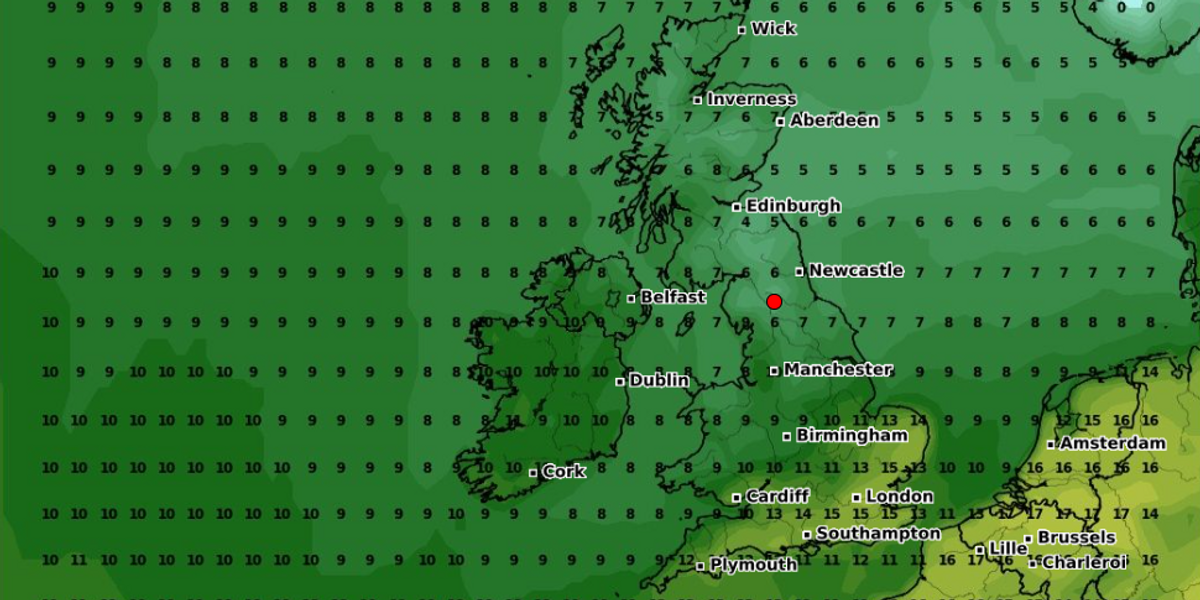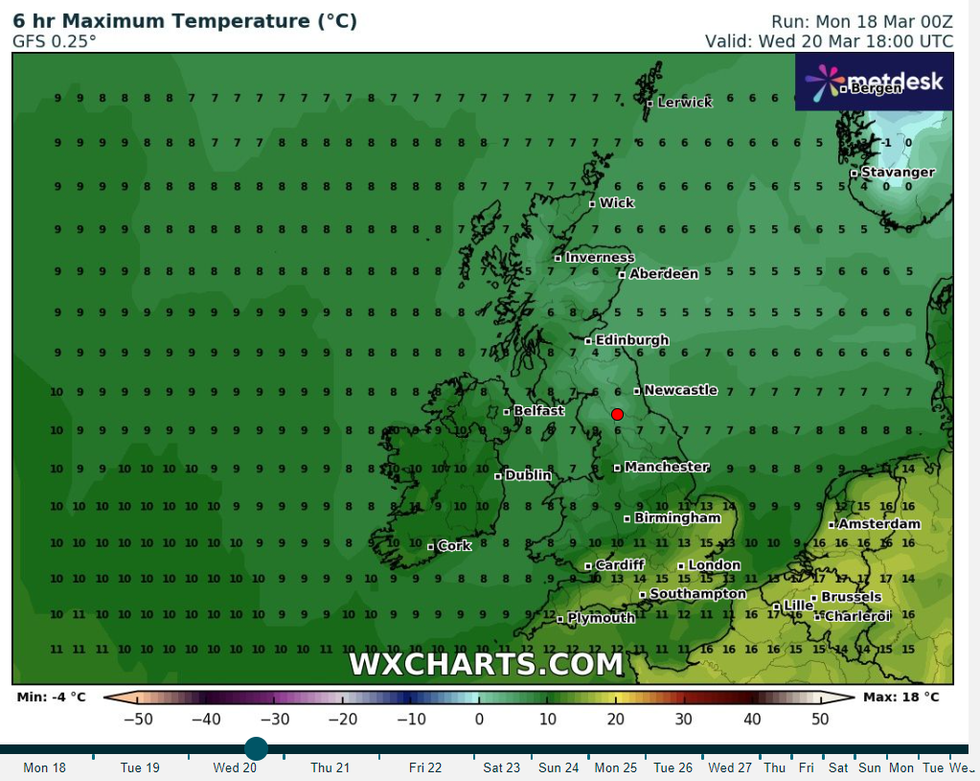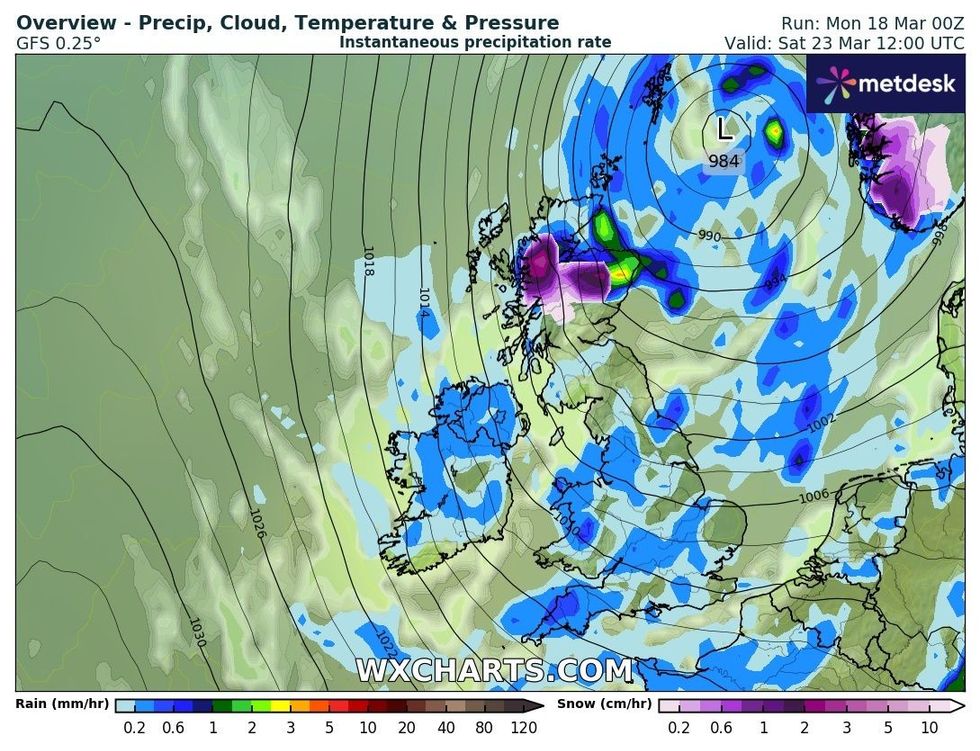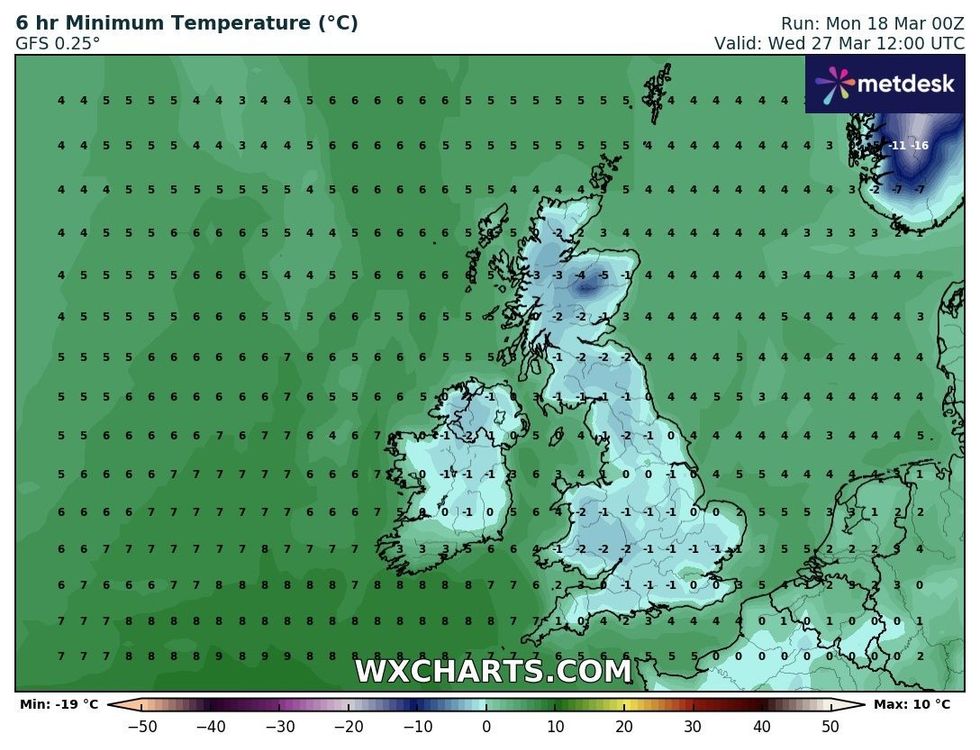The UK is expected to witness warmer temperatures in just a few days time as mercury reaches highs of 15C.
Southern England will benefit from temperatures hitting the highest levels, with London, Kent and Essex likely registering 15C.
Cornwall and Bristol will likely see temperatures fall just short of the highs at around 13C, WXCHARTS’ forecast has claimed.
Parts of Wales and the Midlands could also see mercury hit double-digit on March 20.

Temperatures could reach as high as 15C on Wednesday
WXCHARTS
However, northern England and Scotland will continue to see temperatures struggle in the high single-figures, peaking at around 8C in places.
Despite rising temperatures, Britons can also expect downpours in the early hours on Wednesday morning.
Rain is predicted to hit much of Wales and England in the early hours of March 20.
Wet conditions will remain in place over the coming days, with a weekend washout forecast for Saturday.
LATEST DEVELOPMENTS:

Warmer temperatures will come before a weekened washout
WXCHARTS
Warmer temperatures do not appear likely to remain for long.
WXCHARTS is predicting the mercury will plummet below freezing just seven days after the recent highs.
Scotland will see temperatures drop to as low as -5C on March 27, with -2C in Wales and much of England also struggling to get out of freezing.
The Met Office’s long-term forecast added: “Cloudy across the far south at first on Friday, with some patchy light rain and drizzle clearing southwards early in the day.

Mercury is expected to drop to below freezing by March 27
WXCHARTS
“Elsewhere, a mixture of clear or sunny spells and showers. The showers will be heavy at times with a risk of thunder, and most frequent across the north and northwest.
“Through the weekend, northwesterly winds will bring a mixture of sunny spells and showers, some of these heavy.
“A drier spell may develop later in the weekend with temperatures likely to be below normal for many areas.
“Into the following week, more unsettled conditions will probably develop across parts of the UK, these most likely to affect southern areas. Northern areas are more likely to be dry but also colder.”














Post comments (0)